2,3-dihydro-1H-indol-2-ylmethanol
Modify Date: 2024-01-08 10:20:51

2,3-dihydro-1H-indol-2-ylmethanol structure
|
Common Name | 2,3-dihydro-1H-indol-2-ylmethanol | ||
|---|---|---|---|---|
| CAS Number | 27640-31-9 | Molecular Weight | 149.19000 | |
| Density | 1.12g/cm3 | Boiling Point | 309.1ºC at 760mmHg | |
| Molecular Formula | C9H11NO | Melting Point | 48-57ºC | |
| MSDS | N/A | Flash Point | 166ºC | |
| Name | 2,3-dihydro-1H-indol-2-ylmethanol |
|---|---|
| Synonym | More Synonyms |
| Density | 1.12g/cm3 |
|---|---|
| Boiling Point | 309.1ºC at 760mmHg |
| Melting Point | 48-57ºC |
| Molecular Formula | C9H11NO |
| Molecular Weight | 149.19000 |
| Flash Point | 166ºC |
| Exact Mass | 149.08400 |
| PSA | 32.26000 |
| LogP | 1.15350 |
| Vapour Pressure | 0.000282mmHg at 25°C |
| Index of Refraction | 1.565 |
Synonym:None Known Section 2 - COMPOSITION, INFORMATION ON INGREDIENTS
Risk Phrases: 20/21/22 34 Section 3 - HAZARDS IDENTIFICATION EMERGENCY OVERVIEW
Harmful by inhalation, in contact with skin and if swallowed. Causes burns. Potential Health Effects Eye: Causes eye burns. Skin: Harmful if absorbed through the skin. Causes skin burns. Ingestion: Harmful if swallowed. Causes gastrointestinal tract burns. Inhalation: Harmful if inhaled. Causes chemical burns to the respiratory tract. Chronic: Chronic exposure may cause effects similar to those of acute exposure. Section 4 - FIRST AID MEASURES Eyes: Do NOT allow victim to rub eyes or keep eyes closed. In case of contact, immediately flush eyes with plenty of water for at least 15 minutes. Get medical aid immediately. Skin: In case of contact, immediately flush skin with plenty of water for at least 15 minutes while removing contaminated clothing and shoes. Get medical aid immediately. Wash clothing before reuse. Ingestion: If swallowed, do NOT induce vomiting. Get medical aid immediately. If victim is fully conscious, give a cupful of water. Never give anything by mouth to an unconscious person. Inhalation: Get medical aid immediately. Remove from exposure and move to fresh air immediately. If breathing is difficult, give oxygen. Do NOT use mouth-to-mouth resuscitation. If breathing has ceased apply artificial respiration using oxygen and a suitable mechanical device such as a bag and a mask. Notes to Physician: Section 5 - FIRE FIGHTING MEASURES General Information: As in any fire, wear a self-contained breathing apparatus in pressure-demand, MSHA/NIOSH (approved or equivalent), and full protective gear. During a fire, irritating and highly toxic gases may be generated by thermal decomposition or combustion. Extinguishing Media: Use water spray, dry chemical, carbon dioxide, or appropriate foam. Section 6 - ACCIDENTAL RELEASE MEASURES General Information: Use proper personal protective equipment as indicated in Section 8. Spills/Leaks: Clean up spills immediately, observing precautions in the Protective Equipment section. Avoid generating dusty conditions. Provide ventilation. Vacuum or sweep up material and place into a suitable, dry disposal container. Section 7 - HANDLING and STORAGE Handling: Minimize dust generation and accumulation. Do not breathe dust, vapor, mist, or gas. Do not get in eyes, on skin, or on clothing. Keep container tightly closed. Do not ingest or inhale. Discard contaminated shoes. Use only with adequate ventilation. Storage: Keep container closed when not in use. Corrosives area. Store under an inert atmosphere. Store in a cool, well-ventilated area away from incompatible substances. Section 8 - EXPOSURE CONTROLS, PERSONAL PROTECTION Engineering Controls: Facilities storing or utilizing this material should be equipped with an eyewash facility and a safety shower. Use adequate ventilation to keep airborne concentrations low. Exposure Limits CAS# 27640-31-9: Personal Protective Equipment Eyes: Wear appropriate protective eyeglasses or chemical safety goggles as described by OSHA's eye and face protection regulations in 29 CFR 1910.133 or European Standard EN166. Skin: Wear appropriate protective gloves to prevent skin exposure. Clothing: Wear appropriate protective clothing to prevent skin exposure. Respirators: A respiratory protection program that meets OSHA's 29 CFR 1910.134 and ANSI Z88.2 requirements or European Standard EN 149 must be followed whenever workplace conditions warrant respirator use. Section 9 - PHYSICAL AND CHEMICAL PROPERTIES Physical State: Solid Color: white Odor: Not available. pH: Not available. Vapor Pressure: Not available. Viscosity: Not available. Boiling Point: Not available. Freezing/Melting Point: 48-57 deg C Autoignition Temperature: Not available. Flash Point: Not available. Explosion Limits, lower: Not available. Explosion Limits, upper: Not available. Decomposition Temperature: Solubility in water: Specific Gravity/Density: Molecular Formula: C9H11NO Molecular Weight: 149.19 Section 10 - STABILITY AND REACTIVITY Chemical Stability: Stable at room temperature in closed containers under normal storage and handling conditions. Conditions to Avoid: Dust generation. Incompatibilities with Other Materials: Acids, acid chlorides, oxidizing agents, bases. Hazardous Decomposition Products: Nitrogen oxides, carbon monoxide, carbon dioxide. Hazardous Polymerization: Will not occur. Section 11 - TOXICOLOGICAL INFORMATION RTECS#: CAS# 27640-31-9 unlisted. LD50/LC50: Not available. Carcinogenicity: 2,3-Dihydro-1H-indol-2-ylmethanol - Not listed by ACGIH, IARC, or NTP. Section 12 - ECOLOGICAL INFORMATION Ecotoxicity: Fish: Pseudomonas putida: Section 13 - DISPOSAL CONSIDERATIONS Dispose of in a manner consistent with federal, state, and local regulations. Section 14 - TRANSPORT INFORMATION IATA Shipping Name: CORROSIVE SOLID, TOXIC, N.O.S. Hazard Class: 8 UN Number: 2923 Packing Group: III IMO Shipping Name: CORROSIVE SOLID, TOXIC, N.O.S. Hazard Class: 8 UN Number: 2923 Packing Group: III RID/ADR Shipping Name: CORROSIVE SOLID, TOXIC, N.O.S. Hazard Class: 8 UN Number: 2923 Packing group: III Section 15 - REGULATORY INFORMATION European/International Regulations European Labeling in Accordance with EC Directives Hazard Symbols: C Risk Phrases: R 20/21/22 Harmful by inhalation, in contact with skin and if swallowed. R 34 Causes burns. Safety Phrases: S 22 Do not breathe dust. S 24/25 Avoid contact with skin and eyes. S 26 In case of contact with eyes, rinse immediately with plenty of water and seek medical advice. S 36/37/39 Wear suitable protective clothing, gloves and eye/face protection. S 45 In case of accident or if you feel unwell, seek medical advice immediately (show the label where possible). WGK (Water Danger/Protection) CAS# 27640-31-9: No information available. Canada None of the chemicals in this product are listed on the DSL/NDSL list. CAS# 27640-31-9 is not listed on Canada's Ingredient Disclosure List. US FEDERAL TSCA CAS# 27640-31-9 is not listed on the TSCA inventory. It is for research and development use only. SECTION 16 - ADDITIONAL INFORMATION N/A |
| Hazard Codes | C: Corrosive; |
|---|---|
| HS Code | 2933990090 |
|
~65% 
2,3-dihydro-1H-... CAS#:27640-31-9 |
| Literature: Takeda Chemical Industries, Ltd. Patent: EP1223170 A1, 2002 ; |
|
~96% 
2,3-dihydro-1H-... CAS#:27640-31-9 |
| Literature: Nagata, Ryu; Tanno, Norihiko; Kodo, Toru; Ae, Nobuyuki; Yamaguchi, Hiroshi; et al. Journal of Medicinal Chemistry, 1994 , vol. 37, # 23 p. 3956 - 3968 |
|
~% 
2,3-dihydro-1H-... CAS#:27640-31-9 |
| Literature: Sankyo Company, Limited Patent: US5624935 A1, 1997 ; |
|
~% 
2,3-dihydro-1H-... CAS#:27640-31-9 |
| Literature: Sankyo Company, Limited Patent: US5624935 A1, 1997 ; |
|
~% 
2,3-dihydro-1H-... CAS#:27640-31-9 |
| Literature: Sankyo Company, Limited Patent: US5624935 A1, 1997 ; |
|
~% 
2,3-dihydro-1H-... CAS#:27640-31-9 |
| Literature: Sankyo Company, Limited Patent: US5624935 A1, 1997 ; |
|
~% 
2,3-dihydro-1H-... CAS#:27640-31-9 |
| Literature: Sankyo Company, Limited Patent: US5624935 A1, 1997 ; |
|
~% 
2,3-dihydro-1H-... CAS#:27640-31-9 |
| Literature: Sankyo Company, Limited Patent: US5624935 A1, 1997 ; |
|
~% 
2,3-dihydro-1H-... CAS#:27640-31-9 |
| Literature: Wee, Andrew G. H.; Slobodian Journal of Organic Chemistry, 1996 , vol. 61, # 8 p. 2897 - 2900 |
| Precursor 9 | |
|---|---|
| DownStream 3 | |
| HS Code | 2933990090 |
|---|---|
| Summary | 2933990090. heterocyclic compounds with nitrogen hetero-atom(s) only. VAT:17.0%. Tax rebate rate:13.0%. . MFN tariff:6.5%. General tariff:20.0% |
| indolin-2-ylmethan-1-ol |
| indoline-2-ylmethanol |
| indolin-2-ylmethanol |


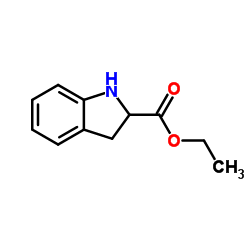
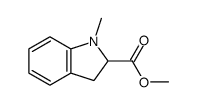
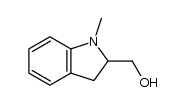
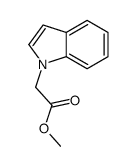

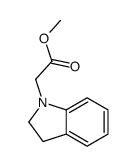

![Pyrrolo[2,3-b]pyridin-1-yl-acetic acid Methyl ester structure](https://www.chemsrc.com/caspic/002/172647-94-8.png)

![1H-Pyrrolo[2,3-b]pyridine-2-carboxylic acid, 1-Methyl-, ethyl ester structure](https://www.chemsrc.com/caspic/408/172648-34-9.png)

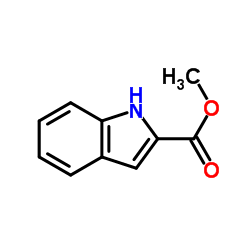
 CAS#:150535-13-0
CAS#:150535-13-0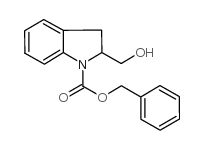 CAS#:135829-04-8
CAS#:135829-04-8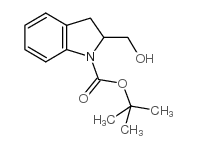 CAS#:172647-87-9
CAS#:172647-87-9